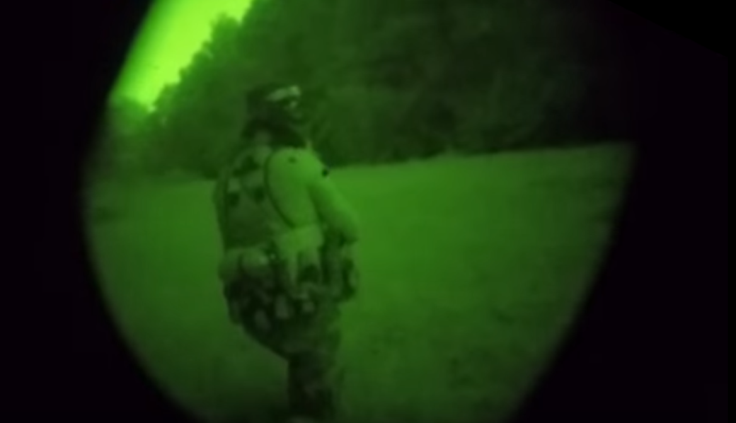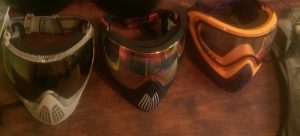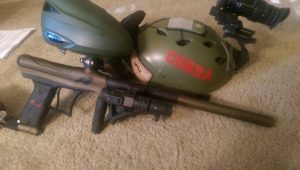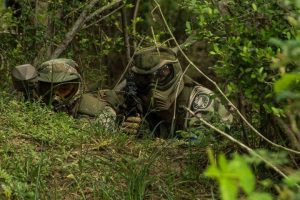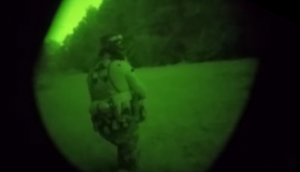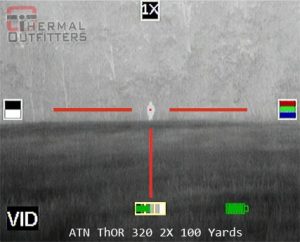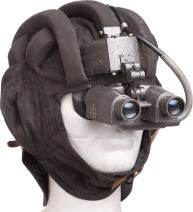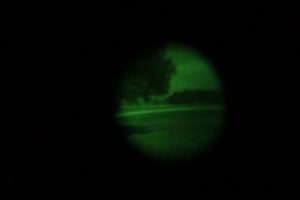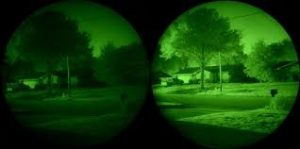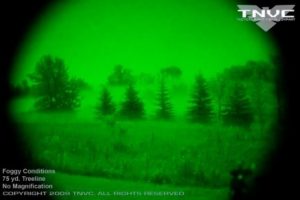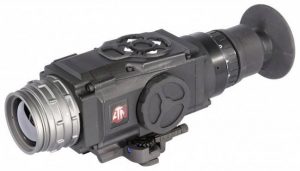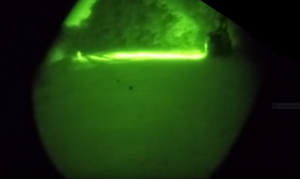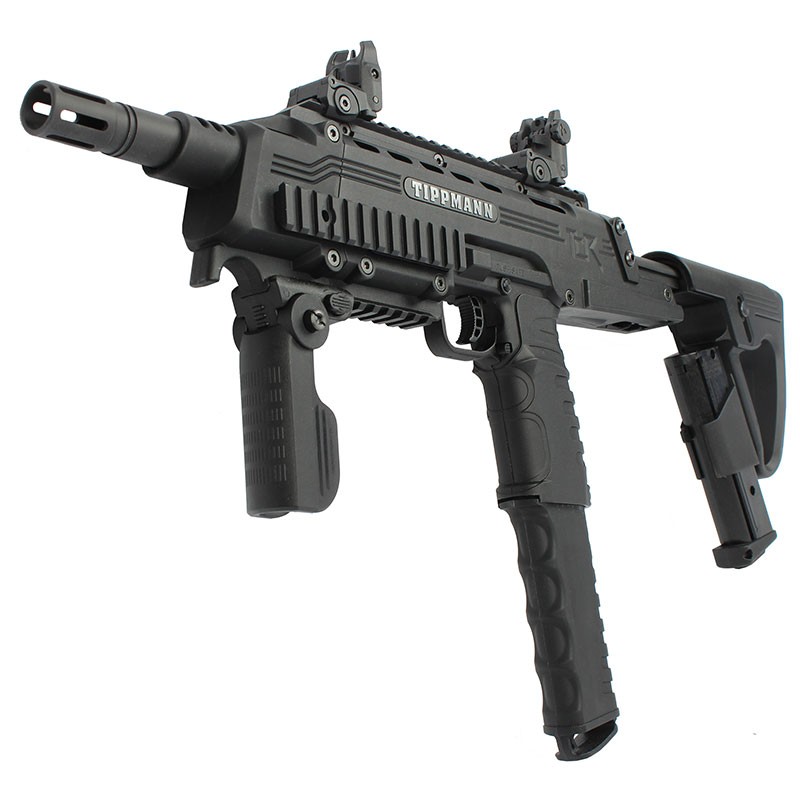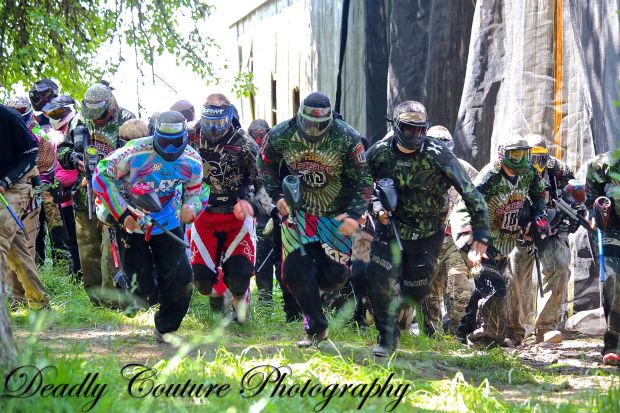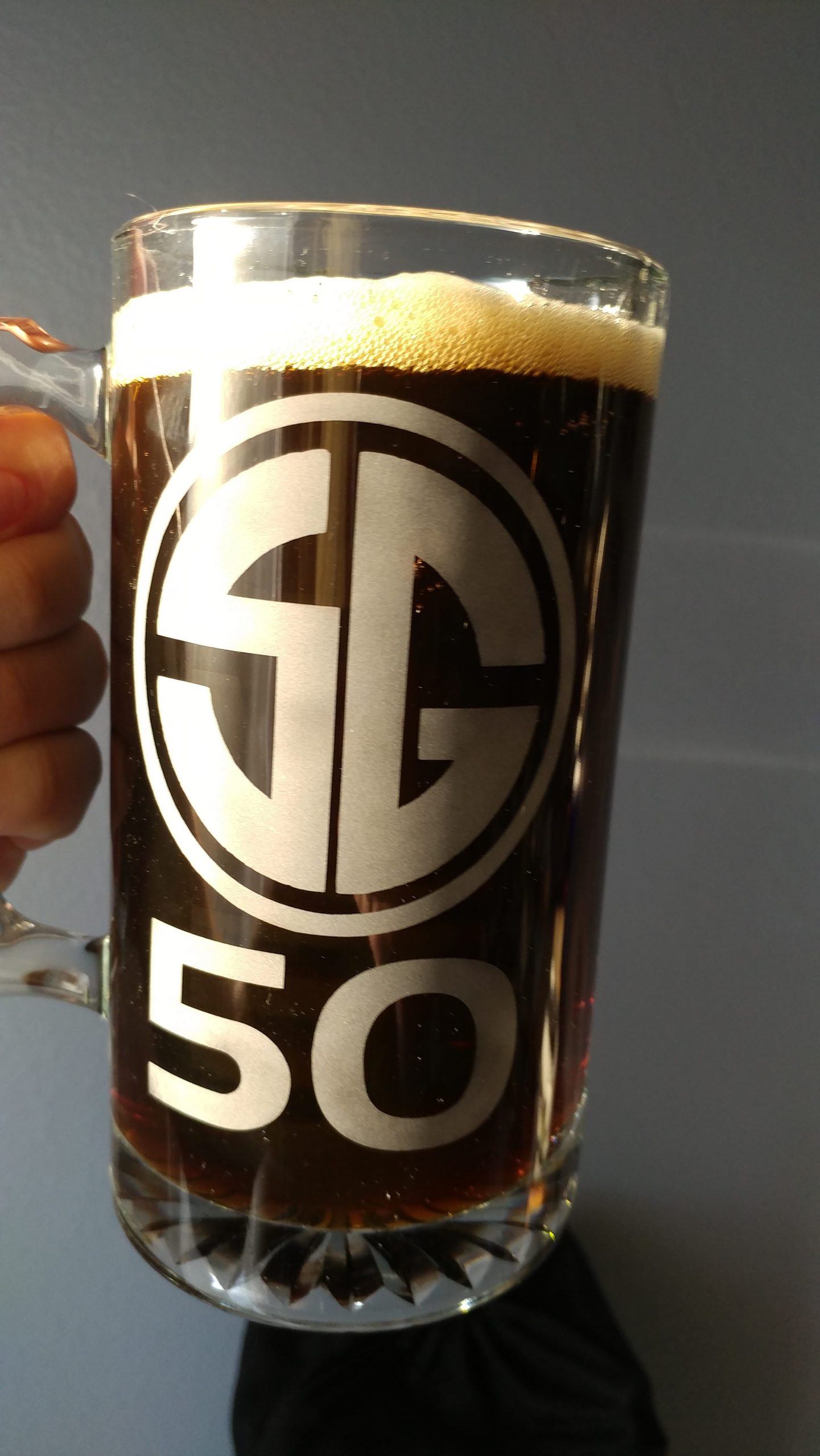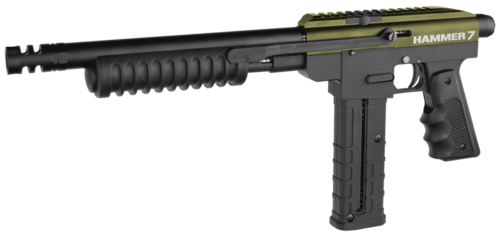Embrace the Night: A Guide to Paintball Nighttime Play and Why You Should Participate
[section label=”Introduction” anchor=”Introduction”]Introduction
I love paintball. It’s a sport I have been imbued with a passion for since I was very young. There truly is no other team sport quite like it. It’s physical, intense, a fantastic adrenaline rush and a truly unique form of athletic competition. It forces you to use teamwork and out-think your opponents, like playing chess with guns (that shoot paint). Paintball truly does offer something for just about everybody. Like many players, I began my paintball career playing recreationally in the woods when I was young, gradually moving up to playing intense games of speedball and tournaments as I got older. It wasn’t until my early 20’s that I was introduced to the awesome world of scenario paintball, where I’ve now made my home in the paintball community. It takes all the fun, all the different styles of paintball (woodsball, speedball, magfed, pump, etc.) and blends them together into one big melting pot of dirty, sweaty, adrenaline-fueled awesomeness. As big, weekend long scenarios have become more popular so has one aspect of the game that most paintball players never get to experience; the night game.
I played my first nighttime paintball game at Viper Events’ Phobia game at TXR Paintball in November of 2014 and immediately fell in love. Playing paintball at night is a truly novel experience for those who have never had the opportunity to participate before. Even the most experienced veteran paintball players will find that playing at night offers an experience like nothing else. The field changes entirely; bunkers become shadowy objects, any one of which could be concealing an enemy. Paths and trails that were clear and easy to follow in the light of day become shrouded in darkness, hard to find, and sometimes harder to follow. Every shuffle and snapped twig has the potential to be a hostile player, just waiting to send paint flying at you from the shadows. It is pure, heart pounding fun. If you are at a game and unsure of whether or not to play at night, or an event coordinator wondering whether or not you should incorporate nighttime play into your event, do it. You won’t regret it. It’s an absolute blast and there’s no such thing as too much paintball.
As fun and interesting as playing paintball at night can be, many players choose not to participate during the nighttime portions of some events. I have found that this is generally because either the player isn’t confident in their ability to play in the dark or they tried a night game before and had a negative experience. Night play can be an absolute blast but there are some things that you have to consider at night that aren’t as important or even considered during daytime play. Taking as informed and well planned an approach to playing at night as you do during the day ensures a much better nighttime experience overall.
[section label=”Mask Considerations” anchor=”Mask Considerations”]Mask Considerations
I wanted to put this first on the list because it is by far the most important and the one guaranteed to ruin your night game if you ignore it. It’s hard to shoot what you can’t see. HAVE A CLEAR LENS! Nighttime is dark (duh) and in order to see as clearly as possible your eyes need to be able to pick up as much light as they possibly can. Wearing non-clear paintball lenses is like wearing sunglasses at night; chances are you’ll be functionally blind which will cripple your effectiveness on the field and poses a potentially serious safety hazard as you will be unable to navigate the terrain and could injure yourself or others. Some people recommend wearing yellow/amber lenses at night, saying that they increase the contrast between objects and make it easier to see in the dark. This is absolutely false. There have been several studies done by researchers at companies such as Laramy-K optical condemning the use of yellow/amber lenses for nighttime activities stating that while they make people “feel” as though they can see better at night in reality your visual acuity is greatly reduced. “Blind” and “overconfident” is a terrible recipe for running around in the dark with a paintball marker. Wear a clear lens and you’ll have a much better time.
The right mask setup can reduce or eliminate fog:
One of the biggest problems people encounter at night, and in paintball in general, is lens fogging. The absence of the sun brings lower temperatures, and lower external temperatures mixed with heat from your body on the inside of your goggles creates a temperature difference that can easily fog up your mask’s lens. There are several ways to mitigate this that will work in both daytime and nighttime play. The right mask is everything because, again, it’s hard to shoot what you can’t see. Utilizing a mask that uses an effective and easily changeable thermal lens or dual-pane thermal lens, such as V-Force Grillz, Virtue VIOS and DYE I4’s is by far the best way to mitigate fogging. I have personally used Dye I4’s for several years now and have never experienced as much as a speck of fog under normal use, day or night, rain or shine (which is saying a lot considering I live in the perpetual cloud of heat and humidity that is Houston, Texas). Regularly changing out your lens will also cut down on fogging (I do about 3 times in a scenario weekend). Modern dual-pane thermal lenses have interior and exterior lenses separated by a thin layer of foam. Over time this foam can become saturated with water and sweat, which will cause fogging on the inside of the lens, between the panes. Regular lense changes however, reduces the risk of that happening to almost zero, even in the most wet and humid situations. Another option is to get fans for the top vents of your goggles. Goggle fans work by pulling hot air away from the inside of your mask, both drastically reducing the internal temperature of your mask and the potential for fog. Several mask systems have optional or aftermarket visor fans that can be purchased online or at your local proshop and certain fans will even fit multiple mask systems. For example Virtue VIOS visors and fans will fit DYE I4 masks with little to no modification. There are also several ways to cheaply build your own fan system using small computer fans, instructions for which can be found online, along with a few companies that will build you a custom fan system for your mask. There are also many kinds of liquids and things that can be applied to your lenses for fog mitigation such as Fog Doc, anti-fog sprays, and some guys even swear by putting baby shampoo on their lenses. I’ve tried them all and while there are some that work with varying degrees of success many of these leave residue and smudges on your lenses which, while inconvenient during the day, can prove detrimental at night. Nobody wants to be shot by the smudgy thing they thought was a bush. Save yourself the hassle and work by investing in a quality mask and good thermal lenses, then if you really feel you need the extra protection, get some fans. Perfect vision is the most fundamental advantage you can have in paintball. It doesn’t matter if a player has a $2,000 marker setup and you have a slingshot, if you can see and he can’t you’ll win ninety-nine times out of a hundred.
Manual fog elimination:
There are several methods for manually eliminating fog from lenses that players can use without removing your mask on the field, which is a serious safety hazard, and will result in your immediate ejection from most fields and events. One is to keep moving. This might sound counter intuitive as movement can cause your body to build up more heat, but practically all paintball masks are designed to vent air from around your lenses. However, this can only happen if the air in and around them is in motion. This is why masks fog so rarely on windy days as wind helps to circulate the air between your face and the lenses of your mask. Something as simple as walking or slowly shaking your head side to side or up and down can circulate air and start clearing fog from your mask if you find yourself in still air. You can also wave your hands in a fanning motion over the top vents of your mask to help clear out some of the stale, humid air. Another way is to practice breathing downwards. Breathing out of your nose sends the hot, moist air from your lungs down and away from the interior of your mask. Similarly you can purse your lips when you exhale from your mouth in a way that forces air downwards. I’ve even seen players use small portable fans to blow air from the underside of their masks to help circulate air through their lens’ vents. Any of these methods can help you keep your lens fog free, day or night.
[section label=”Flashlights” anchor=”Flashlights”]Flashlights
I recommend that every player who plans on attending a night game bring some sort of flashlight with them. This is as much for safety as anything. A light source has a variety of uses at night. The primary use of course, is being able to see things you otherwise couldn’t. Most players will want to use their lights for things such as navigation or illuminating enemy players. This is a double-edged sword however, as any use of a flashlight or spotlight will immediately reveal your location to the enemy. There are red filters you can buy or fashion to cover the lenses of most flashlights that will reduce their signature somewhat but remember, in a pitch black environment any light is still light and will exponentially increase your chances of being spotted. Even with a red filter it is not wise to walk around using a flashlight for navigation unless you have already been shot out, are looking for dropped equipment, or you are hopelessly lost, as doing so will paint a giant “shoot me” sign on your person and on those around you. The biggest benefit of using a red light is that the wavelength produced by most red lights won’t dazzle your night vision, so your pupils will remain dilated and you will retain the ability to see even after the light has been shut off. Using a flashlight to illuminate enemies can be very effective, if done right. However, since using a light to illuminate targets will generally result in paintballs being fired back at the source of the light (aka, you), it’s best if they are only used on a case by case basis. Using spotlights around your base to illuminate the surrounding area is a very effective deterrent for sneaky players trying to creep up on your base in the dark and since you’re at your own headquarters, chances are pretty good they definitely know you’re there anyway. Having hand held lights for your base security can be a very useful tool for illuminating players walking into your base area at night, so they can be checked to ensure they aren’t enemy players (it’s much easier to fool people at night). If you’re out on the field running missions, the most effective strategy for using a flashlight is a good old fashioned ambush. When you’re reasonably certain of an enemy’s location, get into position, illuminate the enemy, fire, and then quickly shut the light off and relocate. This way you or your team can partially blind and eliminate enemy players then quickly disappear again. Be careful not to use strobe functions like the ones generally found on modern tactical flashlights. Such functions are meant to blind and disorient enemy combatants in a war zone or dangerous felons attempting to harm a law enforcement officer. They’re not meant to dazzle fellow paintball players, as doing so could potentially cause seizures and damage to people’s eyesight. Keep that in mind before you run up and use your $400 tactical-light to obliterate the retinas of some 13 year old kid with a borrowed marker.
[section label=”Markers and Hoppers” anchor=”Markers and Hoppers”]Markers and Hoppers
In the pitch black darkness of the night game, using the right marker and setting it up effectively can make all the difference. The pace of most night games tends to be much slower, people shoot a lot less and the distance of most engagements is much closer, especially since most scenarios will require you to chrono your marker down to around 240-250 FPS. With that in mind, you don’t need to be blasting 20 balls per second out of your high-tech electronic marker at night. A lot of people choose to be lighter and more maneuverable at night, so they ditch their daytime paint slinger for a lightweight magfed pistol or something similar. At night huge, drawn out firefights are pretty rare so you can accomplish a lot more with much fewer rounds. Electronic hoppers and markers generally have all kinds of LED lights that will give you away in the dark so it’s totally fine to put down your high tech speedball setup and pick up a magfed weapon or a trusty pneumatic Tippmann A-5. Sometimes however, even at night you might run across a group much larger than yours, and being able to lay down ropes of paint from the shadows could be really handy. In that case, there are a few ways to mitigate or even completely eliminate the light your electronic marker and hopper give off at night. The simplest way is to cover the light emitting area in matte black duct tape or electrical tape. I generally try to find a camouflage tape of some kind however as pure black actually makes for terrible concealment at night; but more on that later. Some players actually choose to black out their lights with layers of nail polish. This works very well but is a fairly permanent solution, as it can be very hard to remove from your gear. Some higher end markers and hoppers actually have lightless modes of operation such as the Tippmann Crossover/XVR and the Virtue Spire. The lights on the Spire can actually be programmed off and the Tippmann XVR has a non-electronic pneumatic operation mode that doesn’t engage any of the marker’s onboard electronics, making them both very effective at night. Markers that are quieter or only fire single shots can also be murderously effective at night, as the single “thump” of a pump or magfed marker at night can be very difficult to locate and return fire on. So if you happen to be a hardcore magfed or pump player, nighttime play might be just the thing for you. It’s the perfect chance to efficiently shoot out all the speedball marker toting guys that had you pinned down with ropes of paint during the day game.
[section label=”Sound Mitigation” anchor=”Sound Mitigation”]Sound Mitigation
Sound Mitigation, it makes a difference!
Unless the player is using thermal equipment or high-end NVGs, the primary way to locate and be located by enemies in the dark is sound. With the majority of your sense of sight taken from you you’ll have to call on your other senses in order to locate the enemy at night and sound is the best way to do it. Listen for scrapes, shuffles, and breaking twigs in the underbrush. Any of these can key you into where other players are moving, so keep your ears open and stop to listen frequently. While you can use sound to locate enemy players, remember that it’s a two way street and your opponents will be doing the same to locate you. Be mindful of the terrain and know what sort of sound your footsteps are likely to make as you move. Avoid stepping on dry, crunchy things like leaves, pine needles, and dried out twigs. You should also learn methods of quiet walking, of which there are many techniques, which will help further dampen the sound of your footfalls. Make sure all the gear you’re carrying is properly secured and won’t make excessive noise. When you put it on, move, run, jump, bend and stretch like you would on the field and listen carefully to see if any piece of your equipment is making excess noise, then see how you can silence any piece of gear that might give you away. Make sure all pods or mags you might be carrying are tightly packed and secured so you don’t hear the sound of paintballs or magazines rattling as you move around. It’s also important to keep talking to a minimum as voices in the dark are a dead giveaway that there are people around. Try to communicate quietly with your teammates and don’t do anything ridiculous like yelling “changing mags!” when you need to reload. Don’t forget trigger discipline either. Accidentally firing your marker at night is a surefire way to bring attention to yourself so keep your booger hooks off the bang button! Remember, learning to move quietly at night is a difficult art to master and practice makes perfect.
[section label=”Concealment” anchor=”Concealment”]Concealment
Proper use of camouflage is just as important at night as it is during the day. There are many schools of thought on patterns and colors for camouflage. If you want to hide effectively at night, you need to wear something with a decent camo pattern or at least something that helps you blend in. I could write a novel on the various schools of thought on camouflage but the message is simple. Use a clothing pattern that breaks up your silhouette, and at night this matters just as much as it does during the daytime. Do not wear black! While it may work in Hollywood ninja movies, black is actually terrible concealment at night. Just as white reflects all light that touches it, making it stand out in the dark, black reflects no light, so your silhouette will actually appear darker than the shadows around it, making you stand out very clearly. In fact, ancient ninjas would wear outfits that were dark navy blue or dark maroon colors, which is much more effective at hiding you at night than plain black. However I don’t recommend this method either since, unlike the shadow warriors of old, modern soldiers, and now paintballers, have to face two distinct threats that were unknown on the battlefields of feudal Japan: bright flashlights and night vision equipment. While dark navy colors and maroons will ensure your silhouette blends better with the shadows, NVGs and bright lights can turn night back into day, removing the shadows completely, so blending with your surroundings just as you do during the daytime is still a key factor in remaining hidden. If a bright flashlight or someone with an NVG passes their gaze over you, your best chance to avoid detection is to stay very still (humans are predators and our eyes and brains are very effective at detecting motion), and conceal yourself in the same manner that you would during the daytime. Remember, the goal isn’t to look like a tree or a bush, it’s to not appear to be something that would be perceived as a threat. You want to look like something that isn’t a target, either making the opponent pass you over entirely, or at least causing them to hesitate long enough for you to get off a shot at them before their brain registers you as a threat. Proper use of camouflage and concealment is key for success at night.
[section label=”Night Vision Devices” anchor=”Night Division Devices”]Night Division Devices
Night vision devices are a very complex and difficult to navigate subject for many people and unless they are something you have a great deal of experience with, their capabilities and usage are hard to properly understand. While night vision devices are a subject that could take hundreds of hours and novels of information to fully explain, there are only a few basic things that you really need to understand about them in the context of paintball. While night vision devices, especially high-end models, were once an extremely rare sight during a nighttime paintball game, as the technology has improved and devices have become more cost effective, many more paintball players are making the investment in NOD (Night Optic Device) technology. This means that understanding night vision technology, the benefits it provides, how to use it, and how to hide from it is a more critical element of the night game than it used to be. The biggest benefit to using a night vision device is that it enhances a person’s ability to see at night while giving off little to no light signature that an enemy could use to locate you. There are about five main categories of devices for enhanced vision at night, all of which use some form of light enhancement capability to increase the amount of visual information you can gather at night. Different NODs are categorized by their capability to enhance ambient light and the method that they use to do it. For those who are interested in knowing more about the differences between the various types of night vision devices, auxiliary information will be included at the end of this article.
Now, while night vision can be a massive advantage to the people use them they are not magic people detection devices (I use a great set of gen 3+ NVGs and I miss people all the time), so don’t be put off from playing by the thought that some enemy players might have them. The best night vision optics in the world only let people see almost as good at night as they do during the day. So in order to hide from guys with night vision you just have to conceal yourself in the same way you do during the daytime. A decent camo pattern and proper use of cover and concealment at night will serve you very well; just don’t stand or crouch in a dark spot and assume you are completely hidden simply because it’s dark. Night vision devices come in several forms such as handheld monocular or binoculars, marker mounted scopes and helmet mounted monocular or binoculars (which are NVGs, aka night vision goggles). Handheld devices and scopes are only really useful for spotting and observing an area from a static (non-moving) position. Because they have to be held up to the eye and have a limited field of view, it is very hard to use them while walking for navigation purposes. Imagine walking around during the day while only seeing the world through a toilet paper roll. The biggest advantage to NVG devices over other types of night vision units is their ability to be used for nighttime navigation. Hands free operation and a wider field of view than scopes or other night vision devices, allows players using NVGs to move around the field quickly and safely, spotting trails, obstacles and changes in the terrain, even in almost complete absence of light. They can also use their equipment to help others do the same which can greatly contribute to the overall experience for other players
Thermal devices are specially designed digital optics that use infrared sensors to pick out changes in temperature and translate that into a visual format (an image on a screen). There are quite a few different companies and models out there but they all work relatively the same. The differences in quality are usually due to the sensitivity of the sensor and the processing power that the device has which translates into changes in frame rate and clarity of the image it produces. People tend to see thermal as the be-all end-all of nighttime detection technology as it is very hard to hide from a device that tracks your body heat. While it can be extremely effective if used properly, it has pros and cons just like anything else. For one, all thermal units are pretty much handheld or weapon mounted devices, so they can only really be used for spotting and scanning from a static position, just like a night vision scope. It’s also fairly easy to block a person’s infrared signature since almost anything, even glass, will generally prevent the device from seeing them. So just take cover behind something and try to move when the device isn’t looking at you and you can out-maneuver someone using a thermal device with a little skill. Thermal devices cannot really be used for navigation either due to the fact that, other than usually being hand held or weapon mounted, thermal devices only register differences in temperature. So if a group of trees, the ground and a bunker are all the same temperature, the device will read them as the same object and this will be displayed on a two dimensional screen. Thermal is also incredibly costly for a decent unit, costing as much or more than Gen 3 night vision devices, which makes them cost prohibitive for most players. There are cheaper thermal devices that work as a clip on attachment for most popular smart phones. However to use these devices, you must have your phone on which means you will be back lit by the screen while using it which limits it’s usefulness. So thermal, while being an incredibly useful tool, also does not function as unbeatable, people detection magic. Like anything else, there are ways to use it and ways to defeat it.
[section label=”Honorable Play” anchor=”Honorable Play”]Honorable Play
The final item on this list, which I absolutely hate that I have to mention, is cheating. Nobody likes a cheater, especially in a community and honor based sport like scenario paintball. The simple fact of the matter is, playing paintball at night makes it easier to cheat. Most scenario night games have fairly similar rules in regards to calling hits. A lot of events, such as those run by the people at Viper Events, (who run the best night game on Earth in my opinion) consider any hit from a paintball at night to be an elimination. Since the darkness makes checking for paintball breaks almost impossible, if you feel a hit you’re out. The vast majority of scenario players are generally honorable and will call themselves out when hit. However it only takes one turd in a bowl of chocolate chips to ruin a whole batch of cookies. If you see someone clearly cheating or suspect them of cheating, just drop a few extra rounds into them. Don’t blatantly overshoot someone but hit them until they call themselves out. Play fair, be honorable and respect the game.
[section label=”Conclusion” anchor=”Conclusion”]Conclusion
In summary, while a night game offers a lot of unique challenges that a paintball player wouldn’t normally face they are an absolute blast to play. There’s something uniquely primal and satisfying about hunting people in the darkness and it’s a ton of fun with paintball markers. I urge anyone who gets the opportunity to play a night game to go for it! You definitely won’t regret it. On the other hand, if you’ve played a night game before and didn’t enjoy it I hope this works as a resource to help you identify what it was you didn’t like about it, and maybe give it another shot with a different approach. If you’re looking for a chance to play a nighttime paintball game, go look for scenario games that may be coming up in your area and check their schedule of events to see if they have a night section. There are tons of scenario events all over the world and quite a few big one’s in the US, so there’s plenty of opportunity to get in on the action. Get out there and play!
[section label=”More on Night Vision” anchor=”More on Night Vision”]More on Night Vision
For those thinking of purchasing night some form of night vision device and wanting to know more about the various designations and what they mean, this is a more comprehensive guide to night vision devices. NVG’s come in Gen 0, Gen 1, Gen 2, Gen 3 and Digital. Some of these categories also have their own subcategories, such as Gen 1+ or Gen 3+ Omni VIII, which usually means that a unit fits into a generational category like 1 or 2 but has some more advanced capability that enhance the device’s performance. One thing people who are planning on investing in a NOD for paintball will need to be aware of before they buy is the device’s eye relief. Eye relief is a measure of how far your eye can be from the device while still being able to look through it. For use with a paintball mask you’ll need a device with eye relief somewhere in the range of 20-25mm. Any less and your paintball mask will render the device relatively useless, so ask questions and do your research before investing.
Gen 0 devices are based on the earliest forms of night vision technology (1940’s-60’s) and most of these found on the market will be repurposed Soviet devices. They do enhance light somewhat but will definitely require an IR (infrared) light in order to be much use and the image will be very poor quality. I highly discourage anyone from buying or trying to use these devices as some Soviet models can actually give off forms of radiation while in use due to being improperly shielded, so unless you love brain tumors, you should probably stay away.
Gen 1 models are probably the most widely available devices on the US and international market. They have the ability to enhance ambient light around 1000-5000x depending on the unit, and will give you varying degrees of visibility. Almost all of them will come with some kind of built-in IR illuminator which they will usually need in order to see much at night. They retail for anywhere from 200 to 600 dollars US and while most of them work, you will get what you pay for, so don’t expect champagne for beer money. With an IR light most models will give you a visible range much better than the human eye alone but the image quality probably won’t be stellar and a lot of models give sort of a “fish eye” image that can cause eye strain and is very disorienting for some people. Any amount of increased vision at night can give you a huge leg up on an opponent however, as the person who can see almost always wins.
Gen 2 devices are a huge step up from gen 1 devices in every way. They can enhance light around 20,000x and provide greatly improved image quality and reliability. With bright enough moon and starlight they can sometimes be used without the use of IR lights and provide a much greater capability to spot people and navigate than previous generations or digital units.
Gen 3 and 3+ devices are the pinnacle of available night vision tech and are what you’ll find in use with current US military and law enforcement units. With a light enhancement capability of 50,000-60,000x and image quality nearly equivalent to the human eye for some models, they are vastly superior to any previous generation of night vision device. As they enhance light so efficiently they generally do not require any source of light, including IR, to see very clearly at night so players utilizing gen 3 can hide very effectively, even from people using other NODs. They are also extremely energy efficient, and some models can run for as long as 50 hours on a single AA battery. Most are monocular or binocular devices designed to be worn on the head, attached to a helmet system. Newer models even come with advanced features like autogating, which automatically dims or shuts off the unit to protect it from light damage, and will also automatically adjust to people attempting to blind the operator with bright lights. Autogated units ensure that the operator retains the ability to see, regardless of changes in ambient light and greatly increase the life of the device’s image tube. Due to the cost of these types of devices ($3,500-15,000), they are fairly uncommon on the paintball field but there are some people and teams that do use them.
The final category of devices is made up of digital units, which are essentially devices that use an infrared sensitive camera and a computerized system to digitally enhance an image and display it on a viewing screen. CCTV nighttime viewing systems use a form of digital night vision, however the image quality on those systems isn’t exceptional. In recent years, several companies, such as Sightmark and ATN, have developed digital night vision scopes and viewing systems that operate on a similar concept but provide much better image quality. The image quality on most portable units is generally somewhere around a Gen 1+ system and they will require an IR light to see much after dark. However they can pretty versatile in terms of capability, and even constructed fairly cheaply, which has contributed to a rise in popularity in recent years. Possibly the biggest upside to a digital system is that, because they digitally enhance images gathered through a camera lense instead of an image intensifying tube, they generally cannot be damaged by excess light and can usually be switched from a light enhancing “nighttime” mode to “daytime” mode. This means digital scopes can be used at all hours of the day instead of users having to switch between separate nighttime and daytime optics. They also display images on a small screen instead of filtering them through a light intensifying tube, so they don’t have problems with disorienting “fish eye” view like some Gen 1 units.
All night vision devices can see infrared light, which is light in a spectrum that the human eye cannot pick up (850+ nanometers), and can use it to enhance their range of visibility at night. There are many commercially available infrared flashlights you can buy to use in conjunction with night vision devices and even ways to make your own. Now while the naked eye can’t pick up IR light (maybe a very faint red glow if an IR flashlight is only rated at 800-850nm) It’s important to note that other night vision devices definitely can. Your NVG’s little IR floodlight might be invisible to a non-NVG using player but through another night vision device you’ll look like the Eye of Sauron searching for hobbits, so you probably shouldn’t keep it on all the time. The same goes for using portable infrared flashlights and IR lasers. You might think your team is being really tactical moving around with all you IR gear turned on, but to someone watching you with NODs it’s going to look like you set up a dance club in the middle of the woods. Light discipline can be just as important with IR lights as it is with regular flashlights.
Original Author: Patrick Gilbert (Huckleberry-Texas Nightstalkers)
Edited by: Jeremy Breckbill (Dutch-COBRA Paintball)

